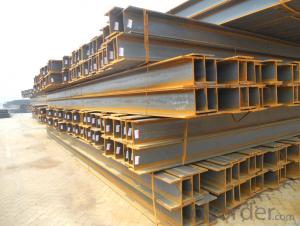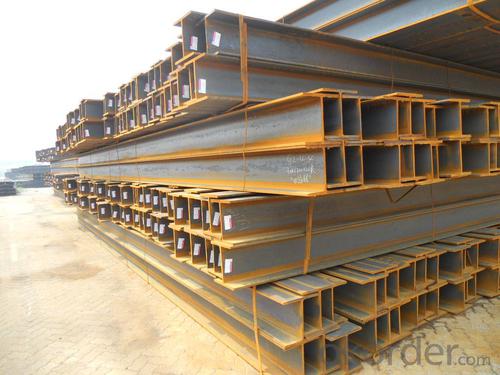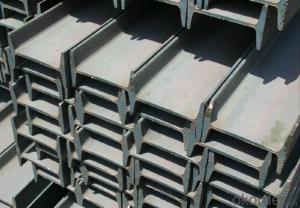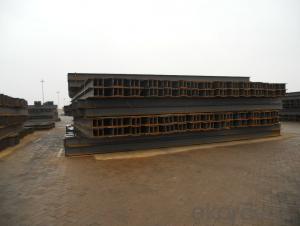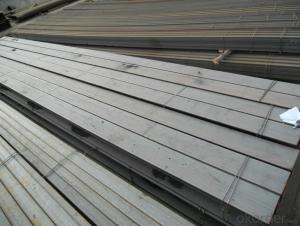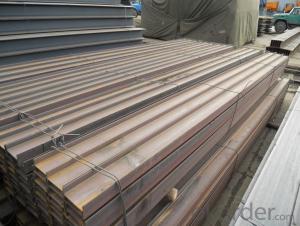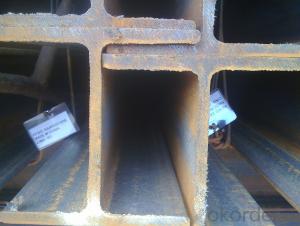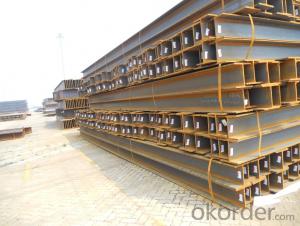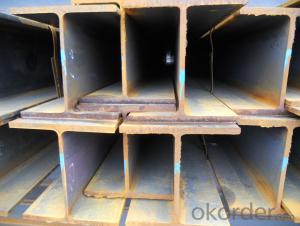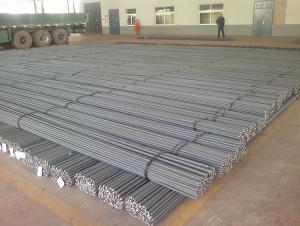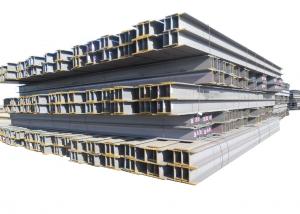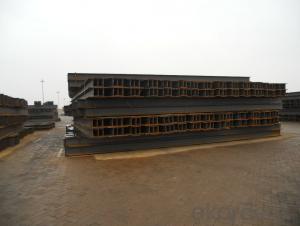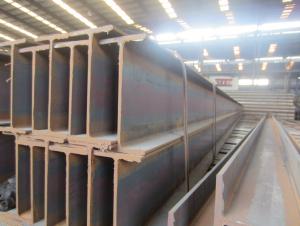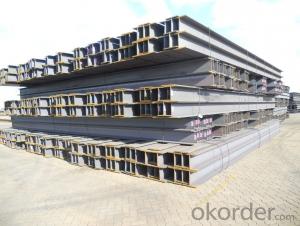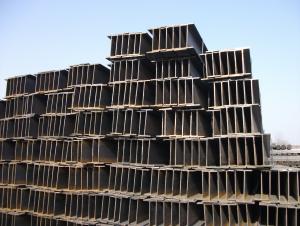Hot Rolled Steel H-Beam for Machinery Support Structure
- Loading Port:
- Tianjin
- Payment Terms:
- TT OR LC
- Min Order Qty:
- 2000 m.t.
- Supply Capability:
- 150000 m.t./month
OKorder Service Pledge
OKorder Financial Service
You Might Also Like
Specification
Product Description:
OKorder is offering Hot Rolled Steel H-Beam for Machinery Support Structure at great prices with worldwide shipping. Our supplier is a world-class manufacturer of steel, with our products utilized the world over. OKorder annually supplies products to European, North American and Asian markets. We provide quotations within 24 hours of receiving an inquiry and guarantee competitive prices.
Product Applications:
Hot Rolled Steel H-Beam for are widely used in the construction of buildings and bridges, and the manufacturing, petrochemical, and transportation industries.
Product Advantages:
OKorder's Hot Rolled Steel H-Beam for Prefabrication structure are durable, strong, and resist corrosion.
Main Product Features:
· Premium quality
· Prompt delivery & seaworthy packing (30 days after receiving deposit)
· Can be recycled and reused
· Mill test certification
· Professional Service
· Competitive pricing
Product Specifications:
Specifications of Hot Rolled Steel H-Beam for Prefabrication structure
1. Standard: Q235B2.
2. Grade: Q235, SS400 or Equivalent
3. Length:10m, 12m as following table
4. Invoicing on theoretical weight or actual weight as customer request
5.Payment: TT
6. Sizes:
SIZE(mm) | DIMENSION(kg/m) |
150*75 | 14 |
150*150 | 31.1 |
148*100 | 20.7 |
198*99 | 17.8 |
200*100 | 20.9 |
Usage & Applications of Hot Rolled Steel H-Beam for Machinery Support Structure
Commercial building structure ;Pre-engineered buildings; Machinery support structure; Prefabricated structure; Medium scale bridges; Ship-building structure. etc.
Packaging & Delivery of Hot Rolled Steel H-Beam for Machinery Support Structure
1. Packing: it is nude packed in bundles by steel wire rod
2. Bundle weight: not more than 3.5MT for bulk vessel; less than 3 MT for container load
3. Marks:
Color marking: There will be color marking on both end of the bundle for the cargo delivered by bulk vessel. That makes it easily to distinguish at the destination port.
Tag mark: there will be tag mark tied up on the bundles. The information usually including supplier logo and name, product name, made in China, shipping marks and other information request by the customer.
If loading by container the marking is not needed, but we will prepare it as customer request.
4. Transportation: the goods are delivered by truck from mill to loading port, the maximum quantity can be loaded is around 40MTs by each truck. If the order quantity cannot reach the full truck loaded, the transportation cost per ton will be little higher than full load.
5. Delivered by bulk vessel
Production flow of Hot Rolled Steel H-Beam for Prefabrication structure
Material prepare (billet) —heat up—rough rolling—precision rolling—cooling—packing—storage and transportation
FAQ:
Q1: Why buy Materials & Equipment from OKorder.com?
A1: All products offered byOKorder.com are carefully selected from China's most reliable manufacturing enterprises. Through its ISO certifications, OKorder.com adheres to the highest standards and a commitment to supply chain safety and customer satisfaction.
Q2: How do we guarantee the quality of our products?
A2: We have established an advanced quality management system which conducts strict quality tests at every step, from raw materials to the final product. At the same time, we provide extensive follow-up service assurances as required.
Images:
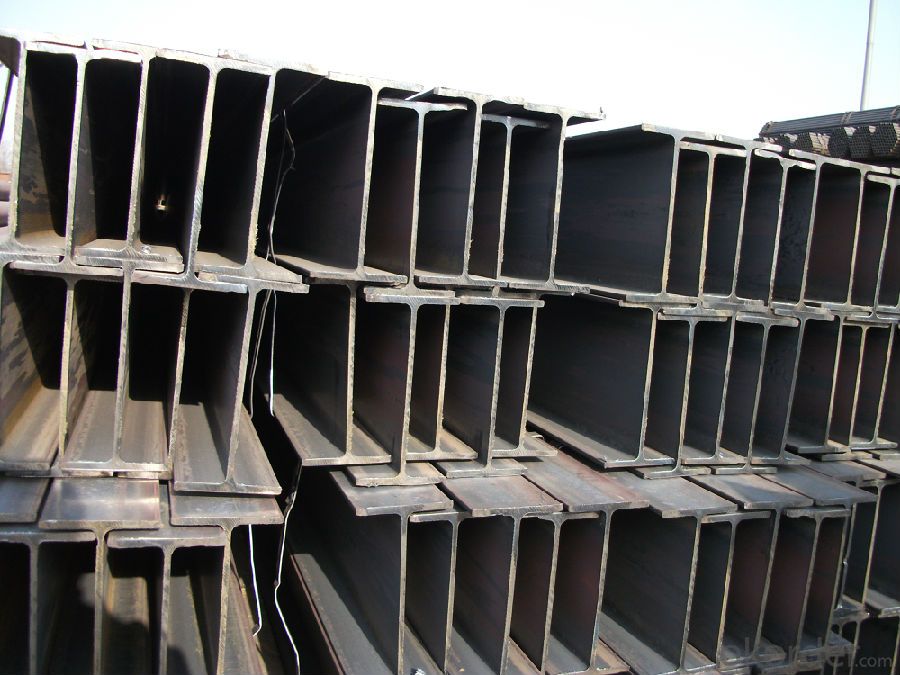
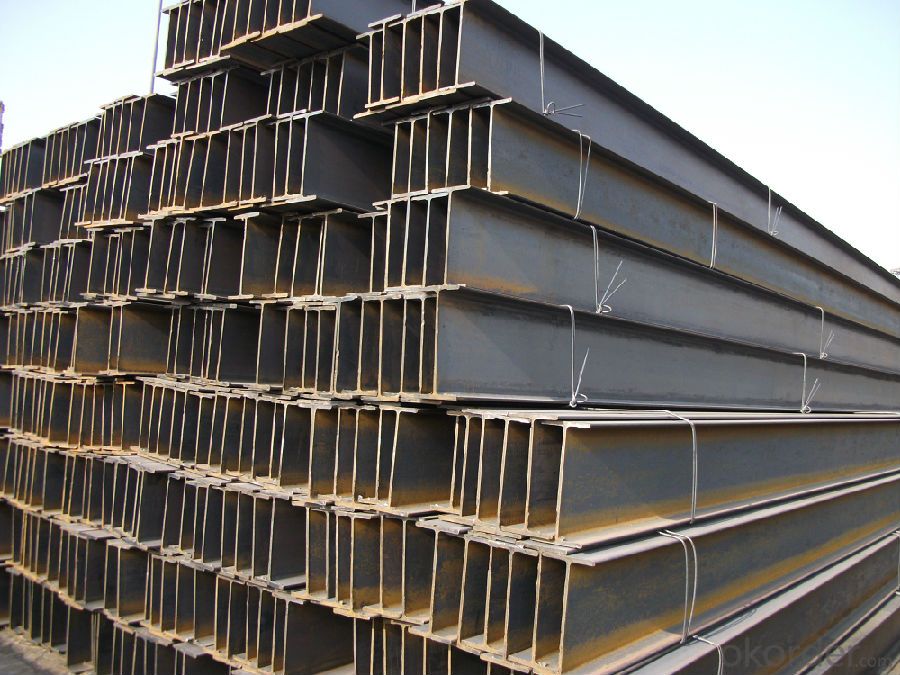
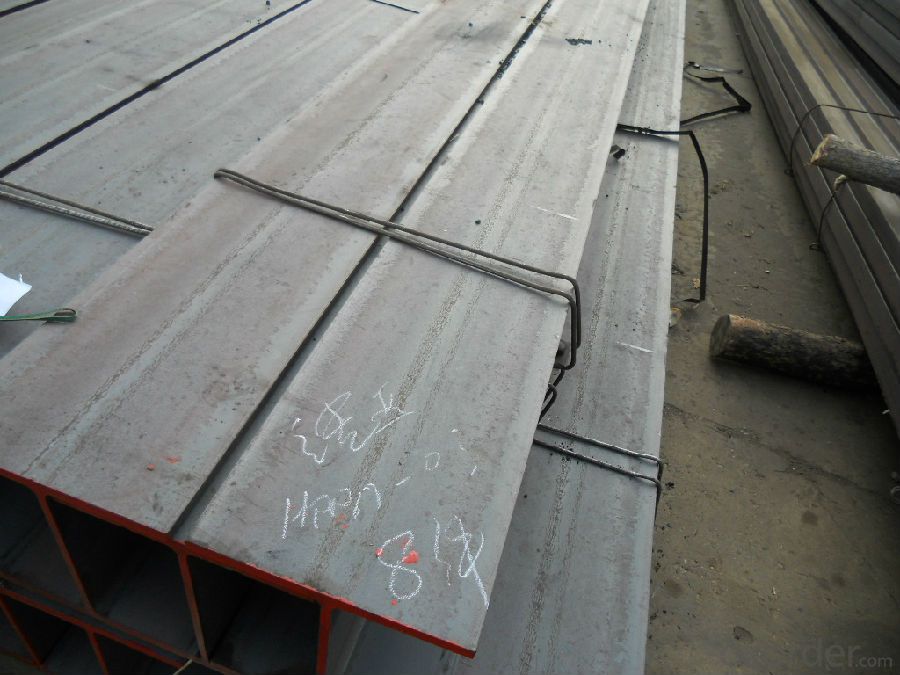
- Q: Can steel H-beams be used for supporting theater stages or platforms?
- Yes, steel H-beams can be used for supporting theater stages or platforms. H-beams are known for their strength and durability, making them a popular choice for structural applications. They provide excellent load-bearing capabilities and can support heavy loads, making them suitable for supporting theater stages or platforms where heavy equipment, props, and performers may be present. Additionally, steel H-beams can be customized to meet specific design and size requirements, ensuring the structural integrity and safety of the theater stage or platform.
- Q: Can steel H-beams be used for cantilever structures?
- Certainly! Cantilever structures can indeed make use of steel H-beams. These structures are specifically designed to incorporate a projecting beam or member that is supported on just one end, while the other end remains free or unsupported. Steel H-beams are widely employed in the realm of construction due to their remarkable strength and ability to bear substantial loads. They are particularly well-suited for cantilever designs as they offer exceptional structural support, effectively minimizing deflection and ensuring overall stability. Nonetheless, it is imperative to take into account the specific requirements of the cantilever structure. In order to determine the appropriate size and strength of the H-beam necessary to support the desired load and span, it is highly recommended to seek guidance from a structural engineer.
- Q: What are the typical fabrication tolerances for steel H-beams?
- The typical fabrication tolerances for steel H-beams vary depending on several factors such as the specific application, industry standards, and the manufacturer's capabilities. However, some commonly accepted tolerances for steel H-beams include: 1. Dimensional Tolerances: These refer to the allowable variations in the physical dimensions of the H-beam, including the height, flange width, web thickness, and overall length. The tolerance range can typically be within a few millimeters or even fractions of a millimeter, depending on the specific requirements and standards. 2. Straightness Tolerances: Straightness is a critical aspect of H-beam fabrication, as it ensures proper alignment and fit in construction projects. The allowable straightness tolerance for steel H-beams is typically specified in terms of a maximum deviation from a straight line over a certain length. This tolerance is usually expressed in millimeters or inches per meter or foot. 3. Surface Quality Tolerances: Surface imperfections such as dents, scratches, or other defects can impact the overall performance and aesthetics of steel H-beams. The acceptable surface quality tolerances for H-beams may vary depending on the intended use and customer requirements but are generally within industry standards. It is important to note that these tolerances can vary across different standards and specifications, such as those set by organizations like the American Institute of Steel Construction (AISC), European Committee for Standardization (EN), or the International Organization for Standardization (ISO). Additionally, manufacturers may have their own specific tolerances based on their capabilities and quality control processes. To ensure compliance with specific project requirements, it is crucial to consult the relevant standards and communicate with the manufacturer or supplier to understand the exact fabrication tolerances for steel H-beams.
- Q: What are the requirements for steel H-beams in seismic zones?
- The requirements for steel H-beams in seismic zones primarily include compliance with seismic design codes, such as the International Building Code (IBC) or the Building Seismic Safety Council (BSSC) guidelines. These requirements typically involve considerations for the beam's strength, stiffness, and ductility to withstand seismic forces, as well as detailing requirements for connections and reinforcement. Additionally, steel H-beams in seismic zones may need to meet specific criteria for material properties, quality control, and fabrication to ensure structural integrity and safety during seismic events.
- Q: Are steel H-beams easy to install?
- Yes, steel H-beams are relatively easy to install due to their standardized shape and size, allowing for straightforward alignment and connection. Additionally, their lightweight yet sturdy nature simplifies handling and positioning during installation.
- Q: Can steel H-beams be used in the construction of cultural complexes or museums?
- Yes, steel H-beams can certainly be used in the construction of cultural complexes or museums. Steel H-beams are widely used in various construction projects due to their strength, durability, and versatility. They provide excellent structural support, making them suitable for large and complex structures like cultural complexes or museums. Cultural complexes and museums often require unique architectural designs and open spaces to accommodate various exhibits, displays, and visitor traffic. Steel H-beams can be used to create large open spaces without the need for numerous supporting columns, allowing for flexible floor plans and uninterrupted views. This is particularly important in cultural complexes and museums, as it allows for the free movement of visitors and the display of large artworks or artifacts. In addition, steel H-beams are known for their ability to withstand heavy loads and provide stability. This is crucial in cultural complexes and museums, where the weight of exhibits, artworks, and other installations can be substantial. Steel H-beams can bear these loads efficiently, ensuring the safety of the structure and the preservation of valuable cultural assets. Furthermore, steel H-beams are highly adaptable and can be easily integrated into various architectural designs. They can be used in combination with other materials, such as glass or concrete, to create visually appealing and modern structures. Steel H-beams also offer a high degree of flexibility in terms of design, allowing architects to create unique and iconic structures that reflect the cultural significance of the complex or museum. In conclusion, steel H-beams are an excellent choice for the construction of cultural complexes or museums. Their strength, durability, and versatility make them suitable for supporting large and complex structures, while their ability to withstand heavy loads ensures the safety and preservation of cultural assets. Additionally, their adaptability allows architects to create visually appealing and iconic designs that reflect the cultural significance of the project.
- Q: What are the different types of steel H-beam connections used in industrial buildings?
- Industrial buildings commonly use several different types of steel H-beam connections to ensure stability and support for the overall structure. Below are some of the most frequently utilized connection types: 1. Welded connection: The prevalent connection type in industrial buildings involves welding the H-beam to other structural members or plates. Welded connections offer exceptional strength and rigidity, making them suitable for heavy-duty applications. 2. Bolted connection: In bolted connections, the H-beam is secured to other structural members using bolts and nuts. This connection type allows for convenient disassembly and reassembly, making it ideal for buildings that may require modification or relocation in the future. 3. Pinned connection: Pinned connections permit rotation at the joint, adding flexibility to the structure. This connection type is commonly employed in situations that necessitate accommodating movement or vibration, such as bridges or buildings located in earthquake-prone areas. 4. Moment connection: Moment connections are designed to transfer both vertical and horizontal forces between the H-beams and other structural members. These connections provide enhanced stability and resistance against bending moments, making them suitable for structures with high loads or complex geometries. 5. Shear connection: Shear connections are utilized to transfer shear forces between the H-beams and other structural members. These connections are typically designed to resist lateral loads and provide stability to the structure. Various factors, including load requirements, structural design, and construction method, influence the choice of H-beam connection type. Engineers and designers evaluate these factors to determine the most suitable connection type for each specific application.
- Q: Can steel H-beams be used in the construction of transportation hubs or terminals?
- Certainly, transportation hubs or terminals can indeed incorporate steel H-beams in their construction. Due to their remarkable strength and durability, steel H-beams are extensively utilized in various construction endeavors. Their exceptional load-bearing capabilities render them perfectly suited to provide support for heavy structures like transportation hubs or terminals. H-beams are frequently employed in the construction of bridges, airports, railway stations, and other transportation infrastructure due to their versatility, which facilitates efficient and cost-effective construction through easy fabrication and installation. Moreover, steel H-beams exhibit commendable resistance to both corrosion and fire, guaranteeing the enduring longevity and safety of the transportation hub or terminal. Overall, owing to their structural integrity and suitability for transportation hub or terminal projects, steel H-beams have gained substantial popularity within the construction industry.
- Q: Can steel H-beams be used for sports arenas?
- Yes, steel H-beams can be used for sports arenas. They are commonly used for structural support in large and complex building projects, including sports arenas, due to their strength, durability, and ability to withstand heavy loads. The use of steel H-beams provides a reliable and sturdy framework for the construction of sports arenas, ensuring the safety and stability of the structure.
- Q: What are the considerations when designing for thermal insulation of Steel H-Beams?
- When it comes to designing the thermal insulation for Steel H-Beams, there are several important factors that must be taken into account in order to ensure the effectiveness and efficiency of the insulation system. Here are some key considerations: 1. Material Selection: It is crucial to choose the right insulation material that has a high thermal resistance (R-value) in order to effectively reduce heat transfer. Common insulation materials for Steel H-Beams include mineral wool, fiberglass, foam boards, and spray foam insulation. Each material has its own advantages and limitations, so selecting the most suitable one is vital. 2. Insulation Thickness: The thickness of the insulation directly affects its thermal resistance. Generally, thicker insulation provides better thermal performance. However, it is important to consider the available space and structural requirements when determining the insulation thickness. Striking a balance between thermal efficiency and structural integrity is key. 3. Vapor Barrier: In certain cases, incorporating a vapor barrier along with the insulation may be necessary. This barrier prevents moisture migration into the insulation, which can lead to reduced thermal performance and potential moisture-related issues. The vapor barrier should be installed carefully to ensure its effectiveness. 4. Fire Safety: Fire safety is a critical consideration, especially for Steel H-Beams used in building structures. The insulation material should have adequate fire resistance properties to prevent the spread of fire. Fire-rated insulation materials or fireproof coatings can be used to enhance the fire resistance of the system. 5. Structural Design: Adding insulation may impact the structural design of the Steel H-Beams. The increased weight and thickness of the insulation should be taken into account in the structural calculations to maintain overall stability and integrity of the structure. 6. Installation: Proper installation of the thermal insulation is essential for achieving the desired thermal performance. The insulation should be installed in a way that eliminates any gaps or voids, as these can act as thermal bridges and compromise the effectiveness of the insulation system. Additionally, attention should be paid to the installation process to prevent any damage to the beams or the insulation itself. In conclusion, careful consideration of material selection, insulation thickness, vapor barrier, fire safety, structural design, and proper installation is necessary when designing thermal insulation for Steel H-Beams. Addressing these considerations ensures that the insulation system effectively reduces heat transfer, improves energy efficiency, and maintains the structural integrity of the building.
Send your message to us
Hot Rolled Steel H-Beam for Machinery Support Structure
- Loading Port:
- Tianjin
- Payment Terms:
- TT OR LC
- Min Order Qty:
- 2000 m.t.
- Supply Capability:
- 150000 m.t./month
OKorder Service Pledge
OKorder Financial Service
Similar products
Hot products
Hot Searches
Related keywords
